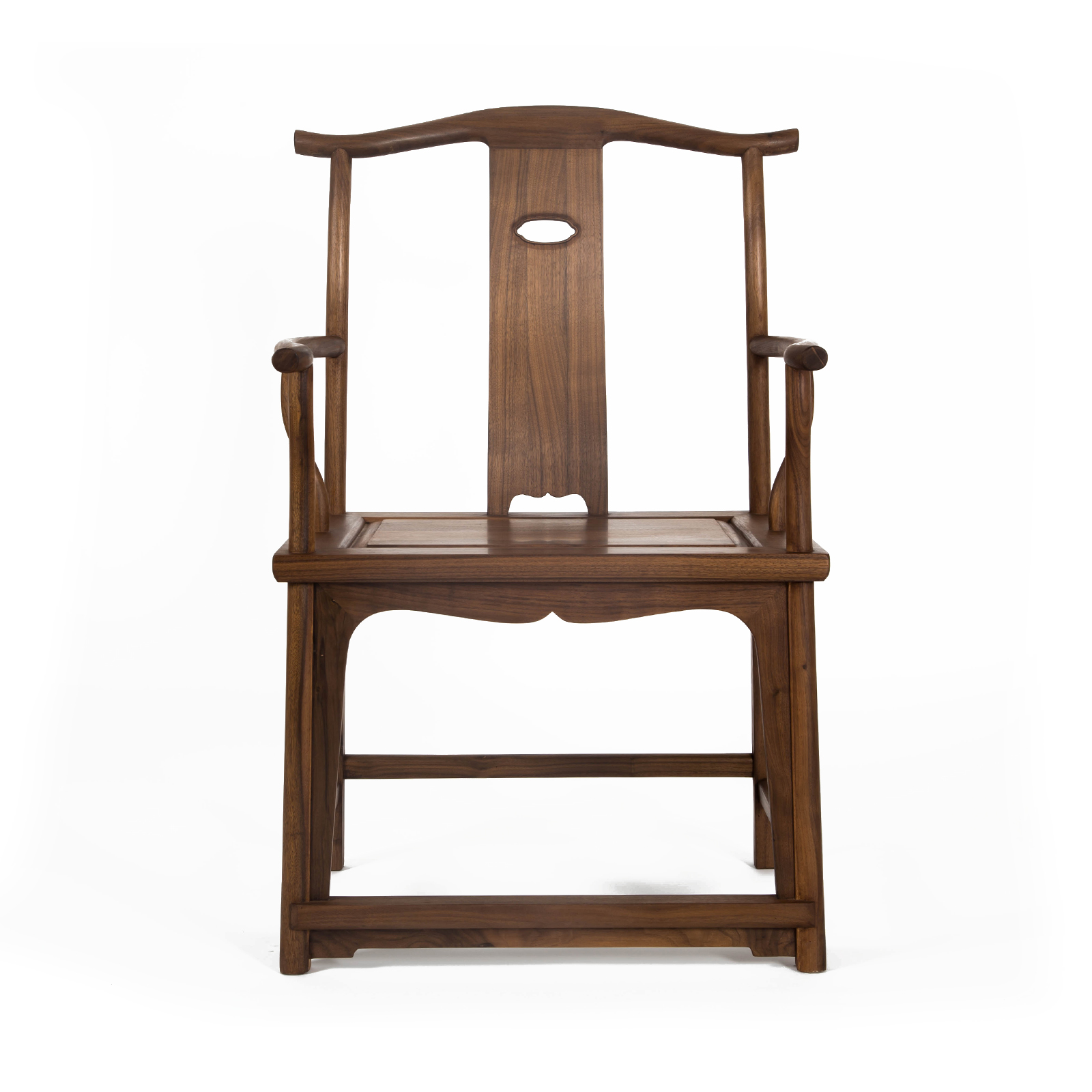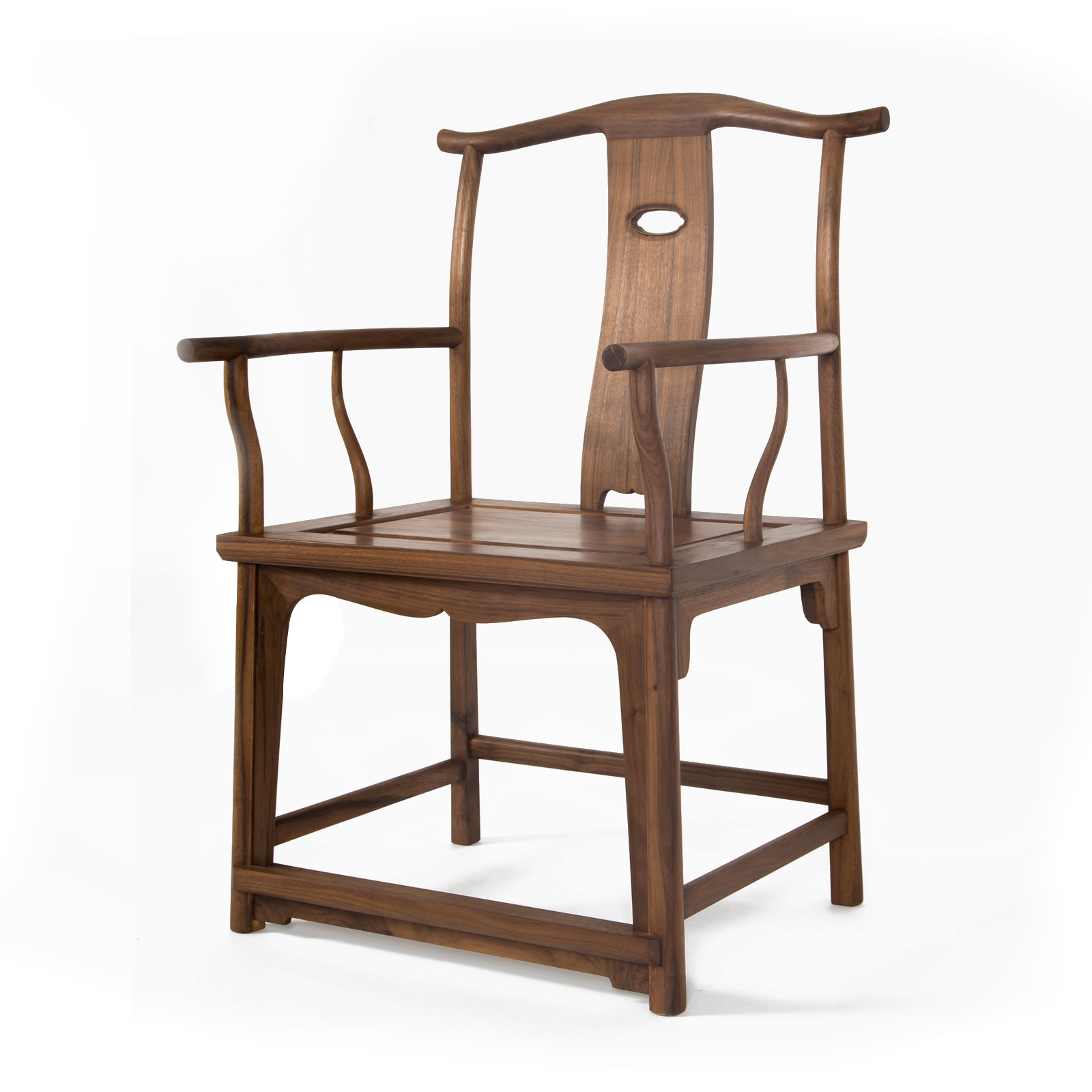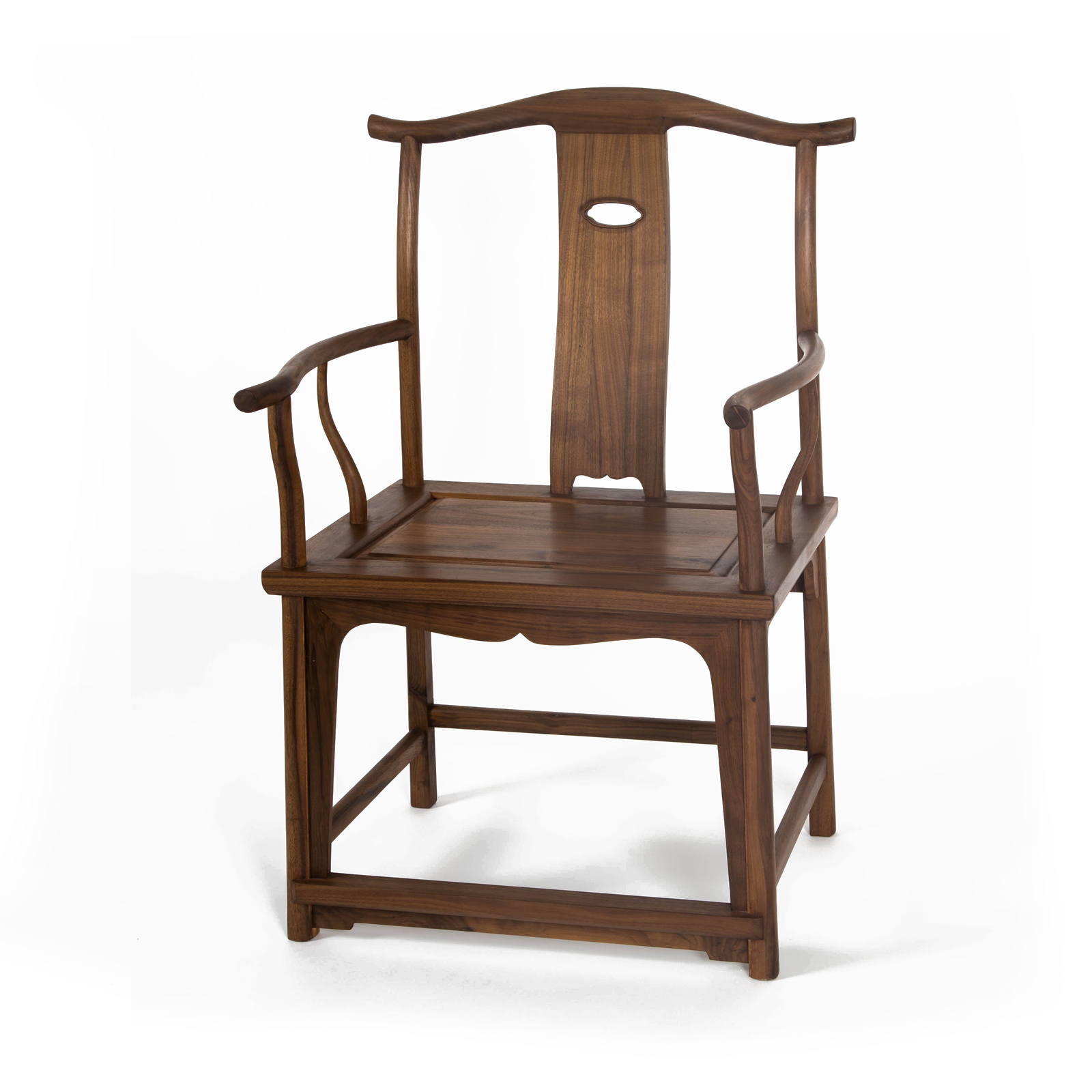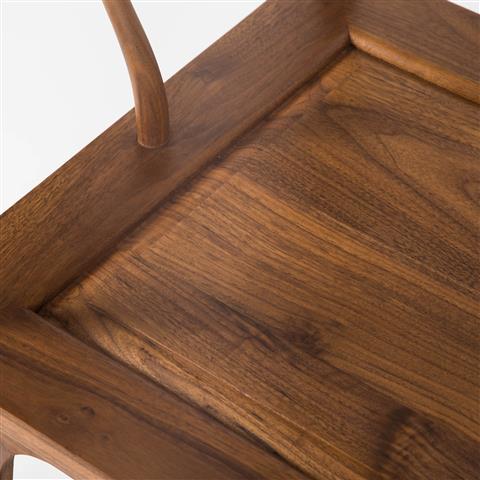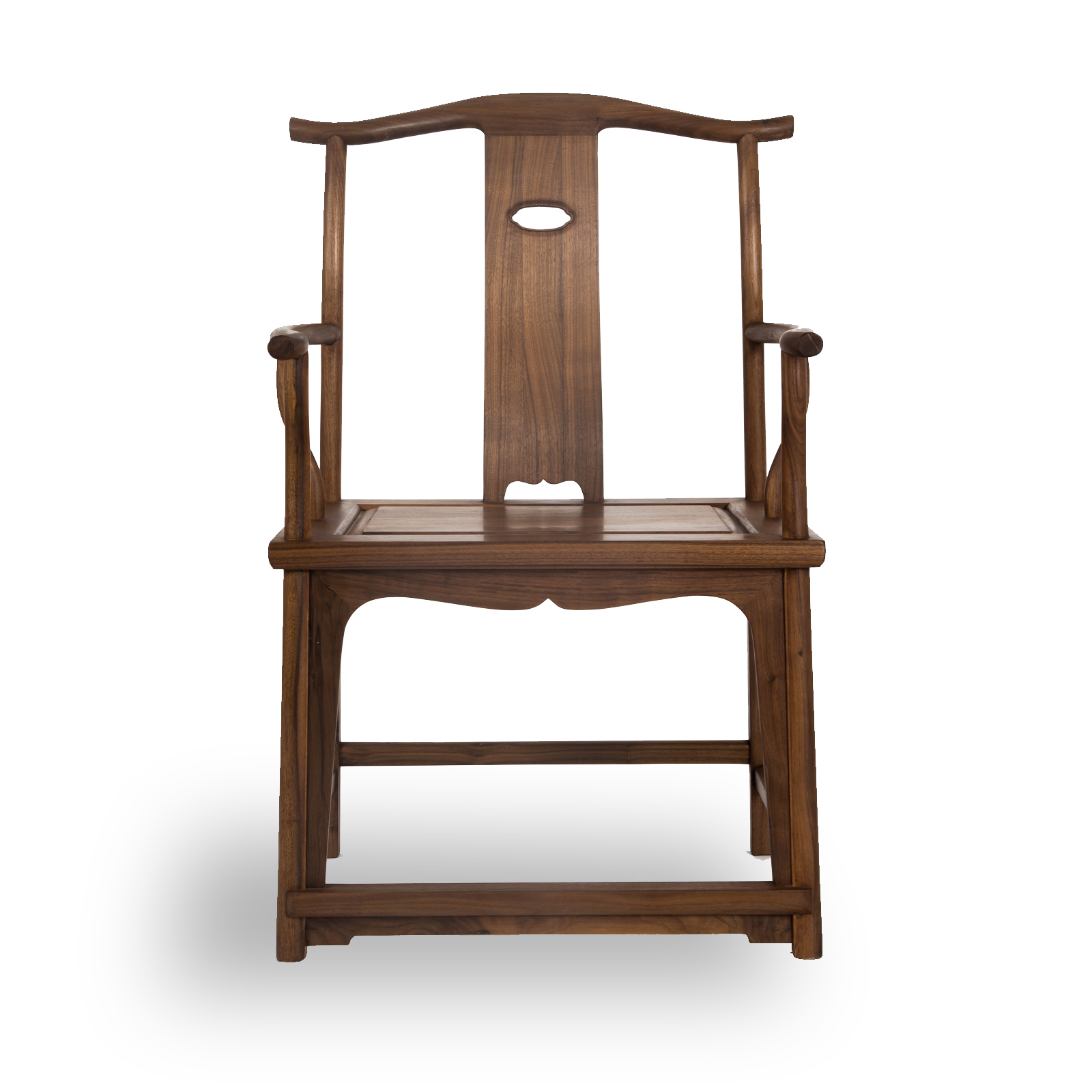Chinese style pipe cap chair
texture of material:: North American black walnut wood
Retail price($): 420
Auxiliary materials: not have
Customized: NO
Description Product Introduction
Description
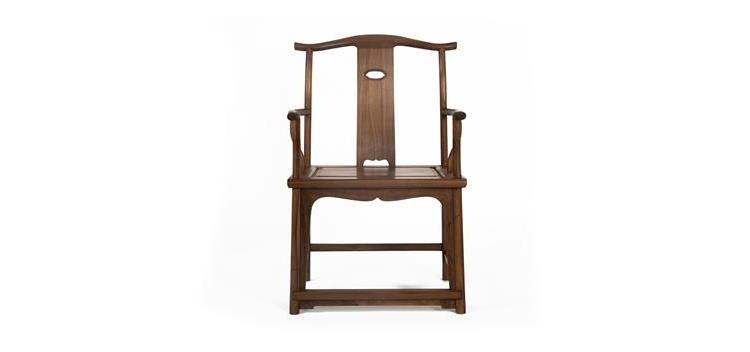
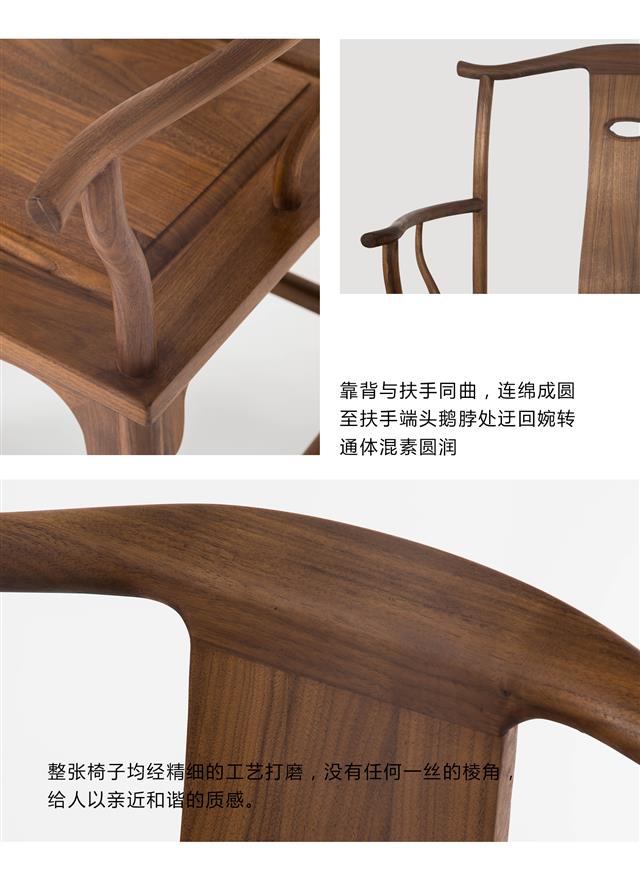
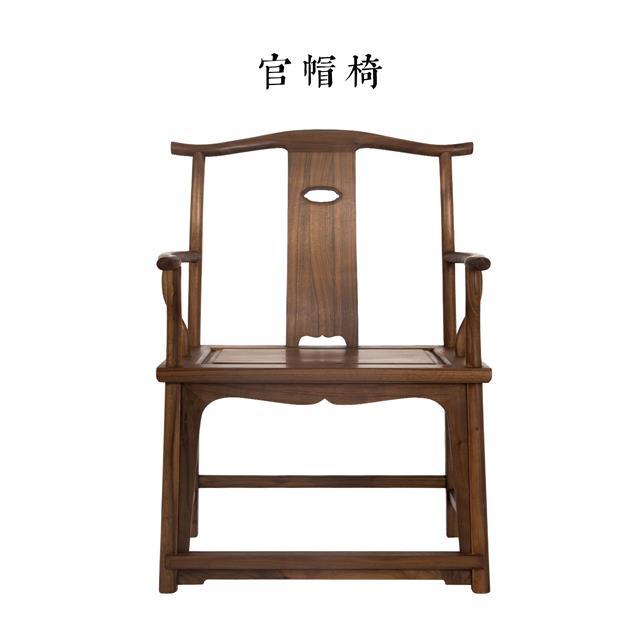
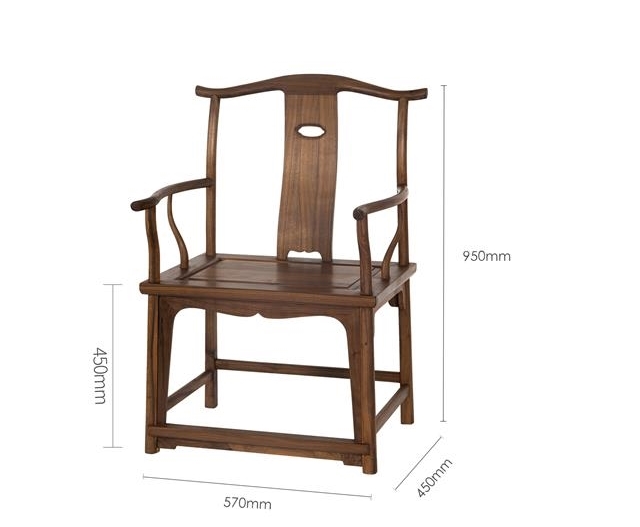
Product Introduction
Introduction to the Chinese Official Hat Chair
The Chinese Official Hat Chair is a remarkable piece of traditional Chinese furniture that holds great cultural and artistic significance.
I. Design and Appearance
- Overall Structure
- The chair features a distinctive structure with a tall backrest and a relatively wide seat. The backrest is often curved in a smooth and elegant arc, providing excellent support to the back. It is divided into several sections, with the upper part sometimes resembling the shape of an official's hat, which gives the chair its name. The seat is usually square or rectangular, offering a comfortable sitting area.
- The legs of the chair are typically straight and sturdy, with some models having slightly curved or tapered ends for added elegance. They are connected by stretchers, which not only enhance the stability of the chair but also add to its aesthetic appeal. The stretchers can be in different styles, such as straight, curved, or even elaborately carved.
- Carvings and Decorations
- Chinese Official Hat Chairs are often adorned with exquisite carvings. The backrest and the armrests are common areas for decorative carvings. The carvings can include a variety of motifs such as traditional Chinese patterns like clouds, dragons, phoenixes, or floral designs. These carvings are meticulously crafted, showcasing the superb skills of Chinese artisans. They are not only for decoration but also carry symbolic meanings. For example, dragons represent power and good fortune, while phoenixes symbolize beauty and prosperity.
- In addition to carvings, the chairs may also be decorated with inlays. Materials such as mother-of-pearl, jade, or other precious stones can be used to create intricate inlay patterns, adding a touch of luxury and refinement to the chair.
II. Materials Used
- Wood Selection
- High-quality hardwoods are commonly used in the making of Chinese Official Hat Chairs. North American Black Walnut is popular choices due to their durability, fine texture, and beautiful color. Mahogany, for instance, has a rich reddish-brown color that deepens with age, giving the chair a warm and luxurious appearance. Rosewood is known for its dense grain and strong resistance to wear and tear, ensuring the longevity of the chair.
- Upholstery (if applicable)
- Some official hat chairs may have upholstered seats or backrests. The upholstery materials can range from silk brocade to cotton fabrics. Silk brocade is often preferred for its luxurious feel and rich patterns. It adds a soft touch to the chair while also enhancing its visual appeal with its vibrant colors and elaborate weaves. Cotton fabrics, on the other hand, are more breathable and suitable for daily use. They are often chosen for chairs that are meant to be more practical and comfortable in a less formal setting.
III. Cultural Significance
- Symbol of Status and Authority
- In ancient China, the official hat chair was closely associated with the social status and authority of its users. It was mainly used by government officials and the gentry class. The design and quality of the chair could indicate the rank and position of the owner. For example, chairs with more elaborate carvings and finer materials were often used by high-ranking officials. The shape of the chair, resembling an official's hat, was also a symbolic representation of their status and power in society.
- Reflection of Traditional Culture
- The chair embodies the essence of traditional Chinese culture. The carvings and decorations on it incorporate various cultural elements and beliefs. The dragon and phoenix carvings, as mentioned earlier, are deeply rooted in Chinese mythology and symbolize the harmony between yin and yang and the pursuit of good luck and happiness. The use of traditional hardwoods and meticulous craftsmanship also reflects the Chinese people's respect for nature and their pursuit of perfection in art and handicrafts.
- Inheritance of Craftsmanship
- The making of the Chinese Official Hat Chair requires sophisticated craftsmanship, which has been passed down through generations. Artisans spend years learning and perfecting the skills of woodworking, carving, and inlaying. This not only preserves the traditional manufacturing techniques but also enriches the cultural heritage of China. Each chair is a testament to the skills and creativity of the artisans, and their efforts have ensured the continuation of this unique furniture style.
IV. Usage and Placement
- In Traditional Settings
- In ancient times, the Chinese Official Hat Chair was commonly found in official buildings, such as government offices and the residences of wealthy families. It was used in formal occasions for receiving guests, conducting business, or for the owners to relax and read. In a traditional courtyard house, the chair might be placed in the main hall or the study, serving as a focal point and showing the elegance and taste of the household.
- In Modern Interior Design
- Today, the Chinese Official Hat Chair has also found its place in modern interior design. It can be used as a unique and stylish piece of furniture in living rooms, dining rooms, or even offices. When placed in a modern setting, it can add a touch of oriental charm and cultural depth. It can be paired with modern furniture pieces in a harmonious way, creating a contrast and enhancing the overall aesthetic of the space. For example, a single official hat chair can be placed in a corner of a living room as a reading chair, or several chairs can be arranged around a dining table to create a distinctive dining area with a cultural flavor.
In conclusion, the Chinese Official Hat Chair is a fascinating piece of furniture that combines beautiful design, high-quality materials, and rich cultural significance. It has not only been an important part of China's traditional furniture heritage but also continues to be appreciated and used in modern times, adding a unique charm to both traditional and contemporary living spaces.


